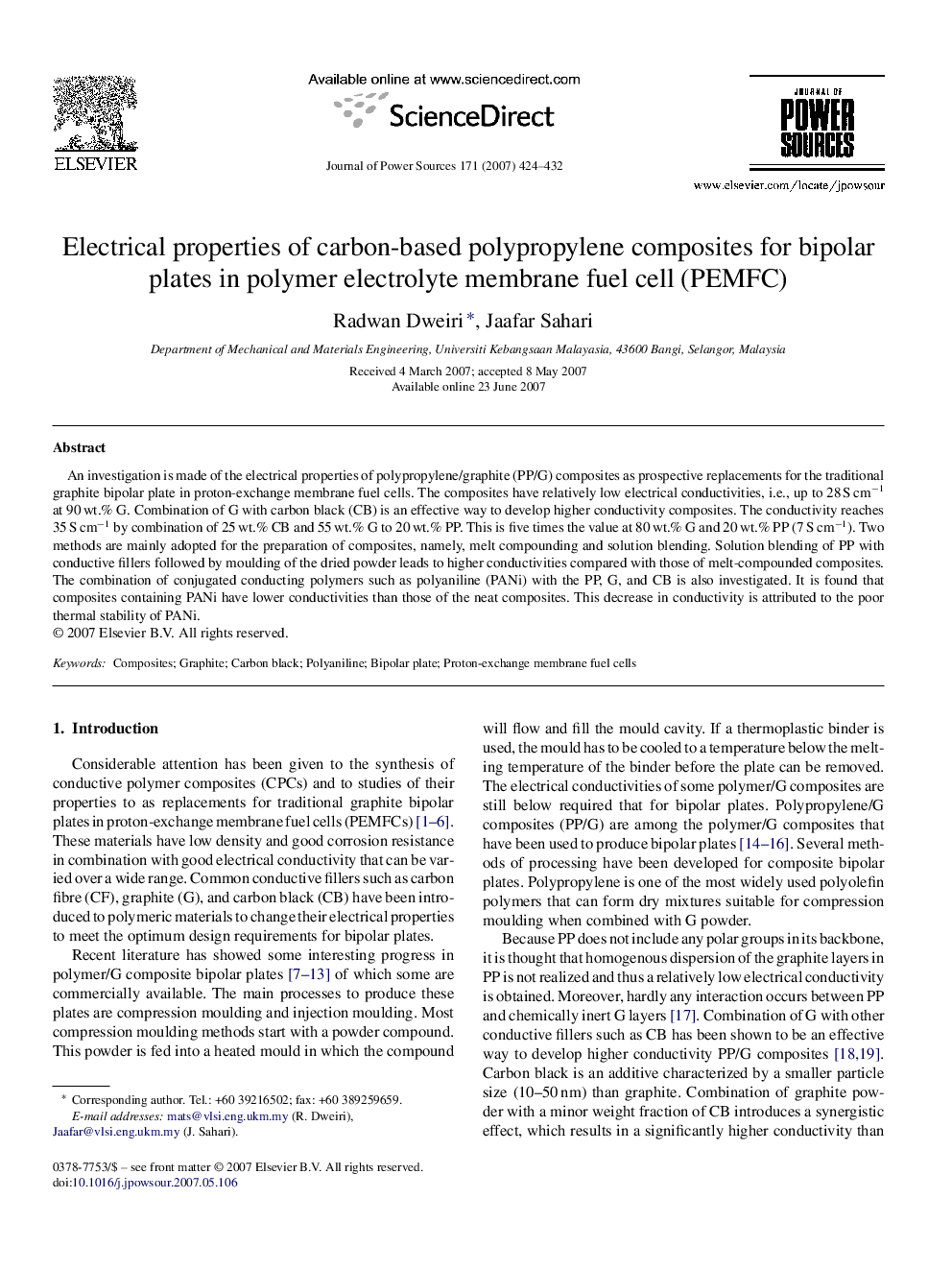| Article ID | Journal | Published Year | Pages | File Type |
|---|---|---|---|---|
| 1286348 | Journal of Power Sources | 2007 | 9 Pages |
An investigation is made of the electrical properties of polypropylene/graphite (PP/G) composites as prospective replacements for the traditional graphite bipolar plate in proton-exchange membrane fuel cells. The composites have relatively low electrical conductivities, i.e., up to 28 S cm−1 at 90 wt.% G. Combination of G with carbon black (CB) is an effective way to develop higher conductivity composites. The conductivity reaches 35 S cm−1 by combination of 25 wt.% CB and 55 wt.% G to 20 wt.% PP. This is five times the value at 80 wt.% G and 20 wt.% PP (7 S cm−1). Two methods are mainly adopted for the preparation of composites, namely, melt compounding and solution blending. Solution blending of PP with conductive fillers followed by moulding of the dried powder leads to higher conductivities compared with those of melt-compounded composites. The combination of conjugated conducting polymers such as polyaniline (PANi) with the PP, G, and CB is also investigated. It is found that composites containing PANi have lower conductivities than those of the neat composites. This decrease in conductivity is attributed to the poor thermal stability of PANi.
